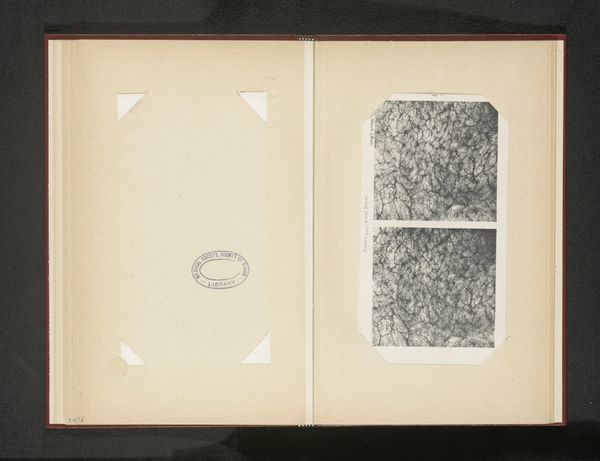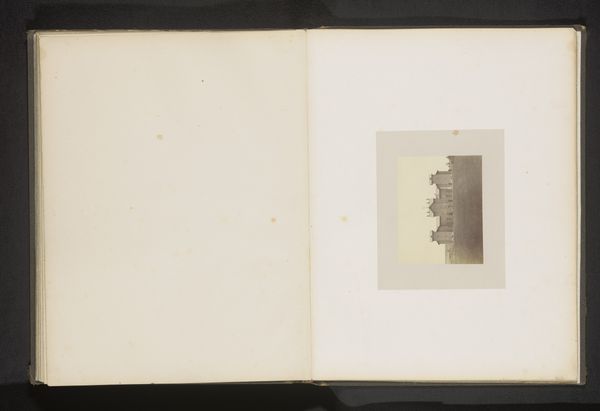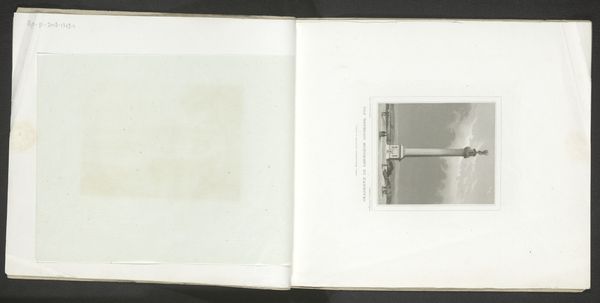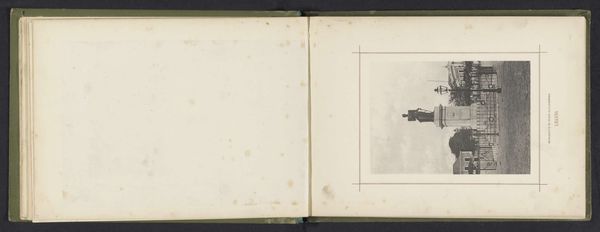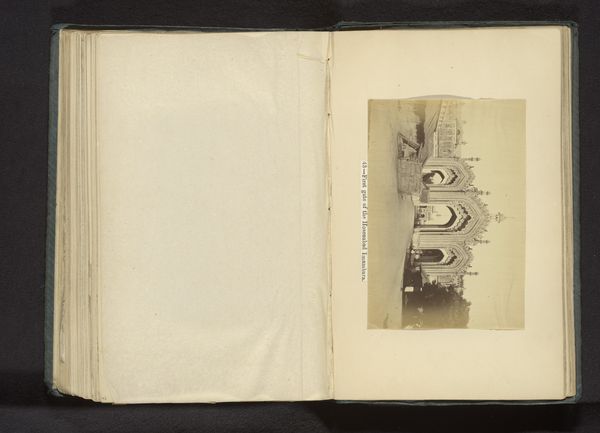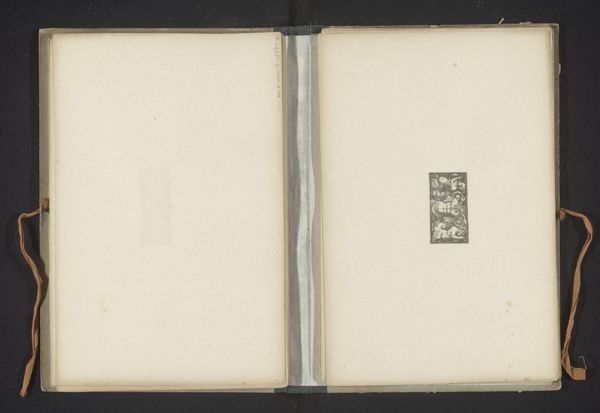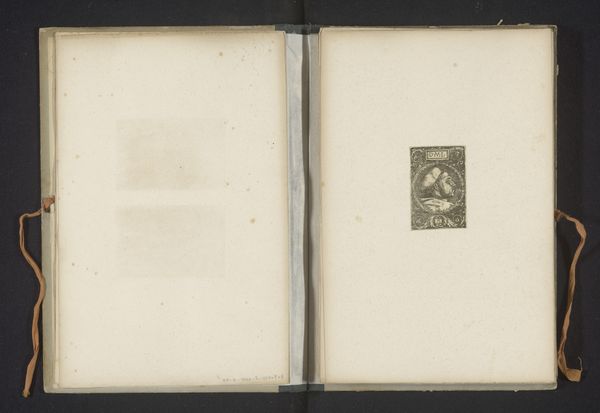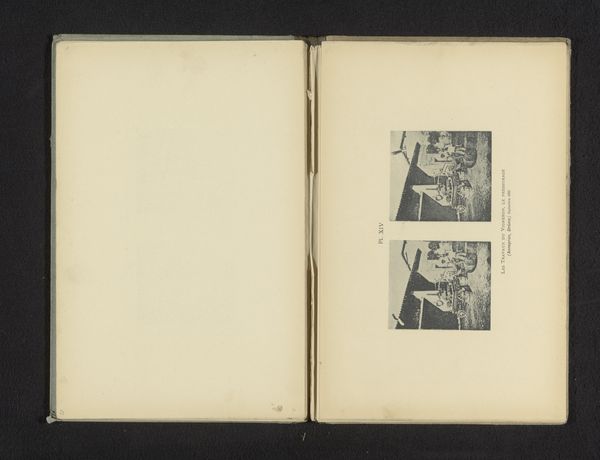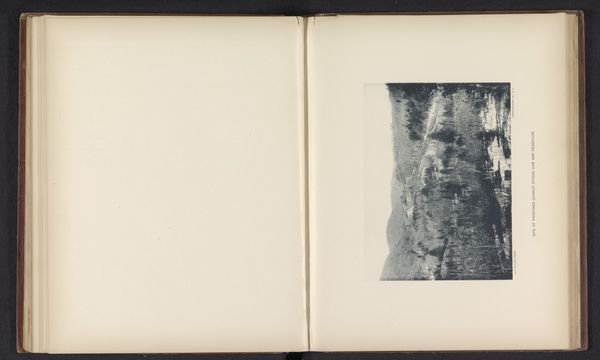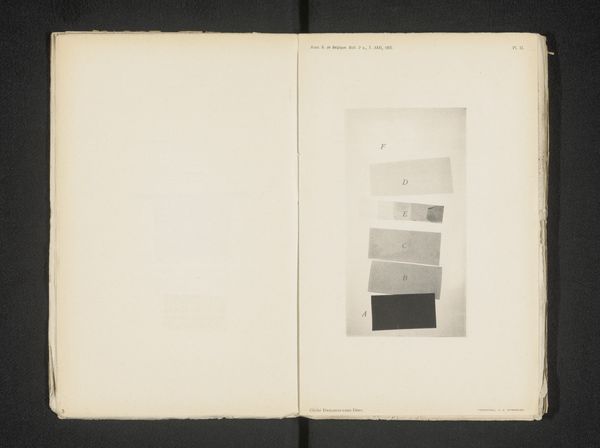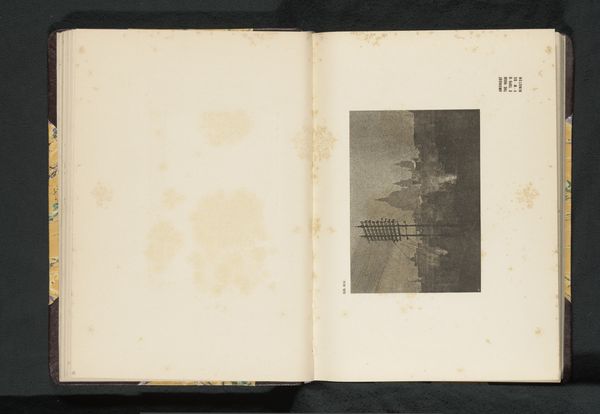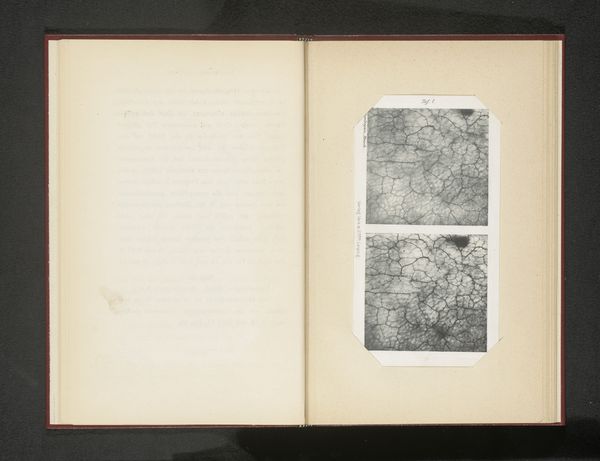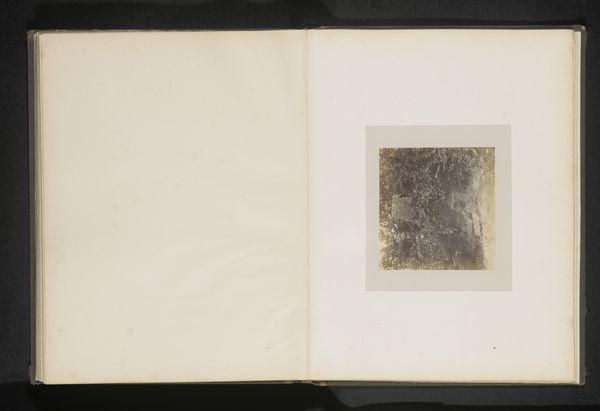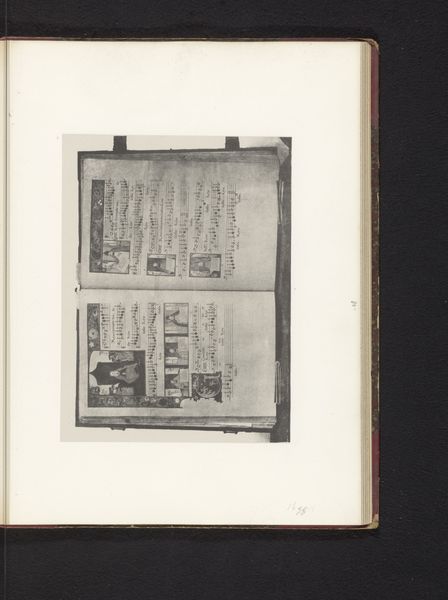
print, paper, photography, gelatin-silver-print
#
still-life
#
aged paper
#
homemade paper
#
paperlike
# print
#
sketch book
#
hand drawn type
#
paper texture
#
paper
#
photography
#
personal sketchbook
#
fading type
#
folded paper
#
gelatin-silver-print
#
thick font
#
modernism
Dimensions: height 88 mm, width 160 mm
Copyright: Rijks Museum: Open Domain
Curator: This image presents a microscopic view, specifically a "Microscoopopname van menselijke huid van een voetzool van een baby," taken by E. Schleicher before 1895. It’s a gelatin-silver print on paper. What strikes you first? Editor: The sheer abstraction of it. Before I knew it was skin, I saw landscape – parched earth or the intricate patterns of a river delta viewed from above. It speaks to the symbolism of our human fragility against the backdrop of time. Curator: And what’s interesting is the presentation; it’s like a scientific record preserved in a sketchbook. Note the aged paper. It adds layers of context—thinking about scientific practice, craft, and knowledge dissemination from a specific period. We can also appreciate this homemade paper feel to the actual supporting leaf. Editor: Indeed. The microscopic photograph is attached carefully, corner-mounted on the right-hand leaf, like an object carefully placed in time. I see almost an archetypal infant’s foot—a symbol of purity, vulnerability, and new beginnings. There is also a ghostly inscription; faded words hint at hidden meaning within. Curator: Right, so, shifting back to materials. Gelatin silver printing processes, commonplace in the late 19th century, democratized photography making these images relatively easy to reproduce. I’d like to understand Schleicher’s laboratory and studio practice further to better see the social contexts in which he was operating and who the audience for these images may have been. Editor: It’s incredible how one image can hold both micro and macro perspectives, isn’t it? A baby’s sole symbolizes innocence while the very medium of its portrayal represents scientific advancements during the height of modernization. A real icon of progress. Curator: I appreciate how the print's placement makes it feel as though knowledge has been pasted into the book almost as a trophy. In thinking through production methods for knowledge-sharing, I appreciate the physical handwork—even a little like collage—at work. Editor: Definitely! I agree; analyzing images like this encourages me to view visual symbols beyond their superficial meanings and trace their emotional echoes throughout history. Curator: Likewise, tracing the materials gives insights into a specific set of industrial-making and artistic conventions from Schleicher's world!
Comments
No comments
Be the first to comment and join the conversation on the ultimate creative platform.
